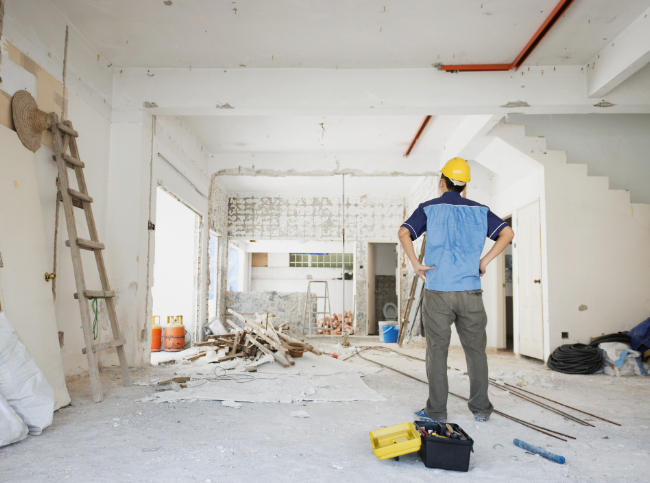Transforming Your Space: A Comprehensive Guide to Residential Home Renovation
Renovating a home is a transformative journey that allows homeowners to breathe new life into their living spaces. Whether you’re looking to enhance functionality, improve aesthetics, or boost property value, residential home renovation is an exciting yet intricate process. This comprehensive guide will explore the various aspects of home renovation, from planning and budgeting to execution and finishing touches.
Why Renovate?
Before diving into the details, it’s essential to understand the reasons behind your renovation. Some common motivations include:
- Increasing Property Value: Upgrades such as modern kitchens, bathrooms, or energy-efficient features can significantly raise your home’s market value.
- Improving Functionality: Creating more storage, adding an extra room, or reconfiguring layouts can make your home more practical.
- Enhancing Aesthetics: A fresh coat of paint, new flooring, or updated fixtures can rejuvenate your home’s appearance.
- Adapting to Life Changes: Renovations can cater to evolving needs, like creating a nursery, home office, or an in-law suite.
Planning Your Renovation
Assessing Your Needs
Start by identifying which areas of your home require renovation and why. Are you addressing structural issues, updating outdated designs, or optimizing space? Having a clear vision will guide your decisions throughout the process.
Setting a Budget
Budgeting is crucial to avoid overspending. Include costs for materials, labor, permits, and unexpected expenses. It’s wise to allocate 10-15% of your budget for contingencies.
Hiring Professionals
While some homeowners prefer DIY approaches, hiring professionals ensures quality and efficiency. Consider hiring:
- Architects or Designers: For structural changes or aesthetic guidance.
- Contractors: To execute the renovation plan effectively.
- Specialists: Such as plumbers, electricians, or HVAC experts for specific tasks.
Designing Your Dream Space
Layout and Functionality
Evaluate your home’s layout to determine if changes are needed. Open floor plans are popular for creating spacious, interconnected areas. For functionality, focus on:
- Kitchen Upgrades: Incorporating smart storage solutions, modern appliances, and ergonomic designs.
- Bathroom Enhancements: Adding double sinks, walk-in showers, or luxurious bathtubs.
- Living Room Features: Installing built-in shelves, a fireplace, or large windows for natural light.
Aesthetic Considerations
Choose a design style that reflects your personality and complements your home’s architecture. Popular styles include:
- Modern: Clean lines, minimalist décor, and neutral palettes.
- Traditional: Warm colors, ornate furniture, and classic details.
- Rustic: Natural materials, earthy tones, and cozy elements.
Choosing Materials and Finishes
Flooring
Options range from hardwood and laminate to tiles and vinyl. Consider durability, maintenance, and aesthetics when selecting materials.
Walls
Experiment with:
- Paint: Choose high-quality paints for durability and easy maintenance.
- Wallpaper: Adds texture and personality.
- Paneling: Wood or wainscoting for an elegant touch.
Fixtures and Hardware
Modern fixtures and hardware can elevate any room. Opt for:
- Energy-Efficient Lighting: LED lights and smart systems.
- Stylish Hardware: Unique cabinet handles, door knobs, and faucets.
Renovation Steps
Demolition
Removing old structures is the first step. Ensure this is done safely and in compliance with local regulations.
Structural Work
Address foundational issues, plumbing, electrical wiring, or HVAC installations. This ensures the home’s infrastructure is robust.
Framing and Insulation
For room additions or layout changes, framing comes next. Insulation is essential for energy efficiency.
Installing New Features
This phase includes installing flooring, cabinets, countertops, and other permanent fixtures.
Painting and Finishing Touches
Finally, apply paint, install light fixtures, and add decorative elements to bring your vision to life.
Navigating Challenges
Time Management
Renovations often take longer than anticipated. Create a timeline and stay flexible to accommodate delays.
Staying on Budget
Monitor expenses closely. Avoid making unnecessary changes mid-project, which can inflate costs.
Communication
Maintain clear communication with your contractors and designers. Regular updates help address issues promptly.
Sustainable Renovation Tips
Eco-friendly renovations not only benefit the environment but also reduce long-term costs. Consider:
- Energy-Efficient Windows and Doors: To minimize heating and cooling costs.
- Solar Panels: For sustainable energy.
- Recycled Materials: Use reclaimed wood, recycled tiles, or eco-friendly paint.
Finalizing the Project
Once the renovation is complete, inspect every detail to ensure it meets your expectations. Address any concerns with your contractor promptly. Finally, enjoy your newly transformed space!
Conclusion
Residential home renovation is an exciting opportunity to personalize your living space, enhance its functionality, and boost its value. With careful planning, budgeting, and execution, your dream home is within reach. Whether you’re tackling a single room or an entire house, the journey is as rewarding as the result. Happy renovating!
